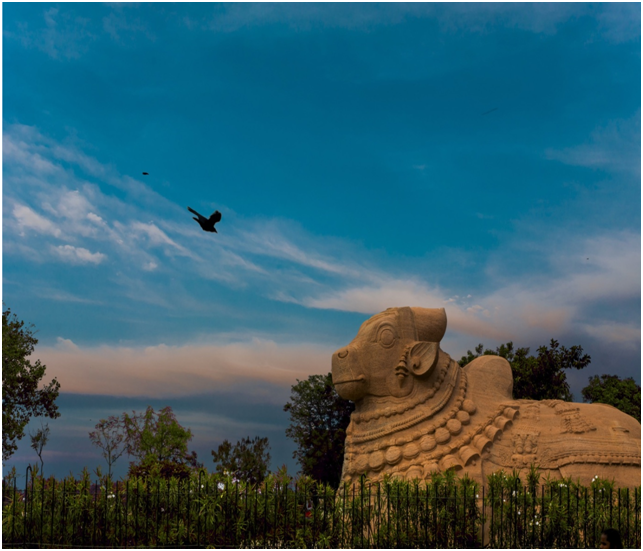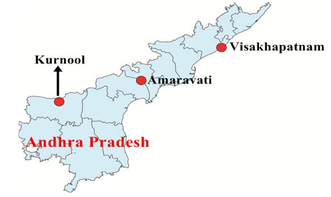

The Andhra Pradesh Assembly has passed ‘The Andhra Pradesh Decentralization and Equal Development of All Regions Bill, 2020’, paving the way for three capitals for the State.
Context
The Andhra Pradesh Assembly has passed ‘The Andhra Pradesh Decentralization and Equal Development of All Regions Bill, 2020’, paving the way for three capitals for the State.
Background:
- After a long fight for independence eventually on October 1, 1953, 11 districts of the then Madras State became the State of Andhra Pradesh with Kurnool as the capital.
- Finally, on November 1, 1956, Andhra Pradesh emerged as the first linguistic state. The erstwhile State of Andhra was united with the Telangana region of the state of Hyderabad.
- With the enactment of the Andhra Pradesh Reorganization Act, 2014, Andhra Pradesh was divided into two states:
- State of Andhra Pradesh
- State of Telangana
- The Act came into effect from June 2, 2014, it also had a provision for separate High Courts for State of Telangana and State of Andhra Pradesh.
- Hyderabad, which was the capital of the erstwhile state of Andhra Pradesh is now part of Telangana and has become its capital.

Analysis
The Three new capitals:
- The three new capitals of Andhra Pradesh will be:
- Amaravati will now be only the legislative capital
- Visakhapatnamwill be the executive capital
- Kurnoolwill be the judicial capital

- Executive capital Visakhapatnam is 700 km from judicial capital Kurnool, and 400 km from legislative capital Amaravati. The Amaravati-Kurnool distance is 370 km.
Is it new for India?
- The concept of having more than one capital is not new in India.
- In Rajasthan, the high court is located in Jodhpur, and not in the capital city of Jaipur.
- Even Maharashtra has summer and winter capitals (Mumbai and Nagpur).
- Himachal Pradesh has capitals at Shimla and Dharamshala, while the former state of Jammu and Kashmir had Srinagar and Jammu as capitals.
- However, in Uttarakhand, 5 governments in 19 yrs failed to decide where the capital should be. It holds a unique distinction in Independent India's history of being the only state with no permanent capital.
Parliament VS State: Who has the power to decide?
- Article 2 and Article 3 of the Constitution of India confer exclusive and plenary powers upon Parliament to form or establish or completely alter and destroy the identity of the existing state.
- It is within the exclusive domain of Parliament to form any state, set boundaries, and name a state, set boundaries, and name a state in the Union as defined in Article 1 of the Constitution.
- The power to establish a state’s capital is inherent to, and inseparable from, the power conferred upon Parliament under Articles, 2, 3 and 4 of the Constitution of India.
- The matter of establishing the capital of a new state formed by Parliament by law is not covered by any Entry in List-II of the Schedule-VII of the Constitution.
- It is specifically because the capital of a state shall foster the needs of all sections of the society of the state without any political discrimination as to the development of a particular region of such a state.
- Therefore, only the Indian Parliament can, by law, establish the capital of a newly reconstituted state, which after reconstitution and reorganization by enacting a law, under Article 3(a)(c)(d) of the Constitution.
- The current proposal of three capitals in the state has not received the consent of the central government.
The idea of “decentralization”:
- The first reference of decentralisation was made in the Sri Bagh pact, which was signed by the then political leaders from Coastal Andhra and Rayalaseema on November 16, 1937.
- According to the pact, for a balanced decentralisation, it was decided to continue with Andhra University in Visakhapatnam and the High Court and the capital be divided between the two regions.
- Decentralisation was the central theme in recommendations of all major committees that were set up to suggest a suitable location for the capital of Andhra Pradesh.
- G N Rao Committee: A Committee constituted under former IAS officer G N Rao, in its December 2019 report, recommended three capitals for balanced growth, and four regional commissioners along the lines of Karnataka.
- BCG recommendation: The global management consulting firm Boston Consultancy Group, on January 3, 2020, recommended that Visakhapatnam should be the seat of the Governor, Chief Minister, and all government departments, and a High Court Bench, and have provisions for a Legislative Assembly for use in an emergency; Vijayawada/Amaravati should have the Assembly and a High Court Bench; Kurnool should have the High Court and tribunals.
- High-powered Committee: A high-power Committee appointed to study the recommendations of the G N Rao Committee and the BCG suggested that the state should be demarcated into zones with separate zonal planning and development boards in order to ensure inclusive development and that infrastructure projects focussed Rayalaseema and North Coastal Andhra should be prioritised.
Why would Andhra Pradesh need three capitals?
- Positive side:
- The state government claims that it would allow an even development of the state. It would ensure justice to everyone and every region.
- It also claims it’s a good idea to decentralise power across the state as there have been several imbalances among the regions which had often led to agitations. Three capitals will lead to equitable development.
- Furthermore, it would be a boost to urbanisation and then economic development. In India, cities contribute anywhere between 59% and 70% of the GDP.
- Negative side:
- Andhra Pradesh has shrunk in size after Telangana was carved out of it in 2014, and it’s hard to see how having government functions sprawled across three locations would lend itself to efficient governance.
- Its immediate effect, though, would mostly be an artificial spike in real estate prices in the two new proposed capital regions, and land sharks would move into part people from their land before the state turns up with offers.
- Instead of pursuing experiments of this sort, the state should dedicate itself to fulfilling the aspirations of its people. Assuredly, a single capital would be good enough.
However, the idea of three capitals can also restore regional balance in governance. But the state needs to have an effective plan for coordination among all sector and especially the three institutes of the democracy as the three pillars cannot operate from far away places.



